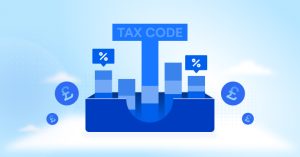A Guide to CIS Tax Refunds for Subcontractors and Limited Companies
Navigating the UK's Construction Industry Scheme (CIS) doesn’t have to be a headache. Whether you’re a subcontractor, running a construction business, or working as a limited company, getting the hang of CIS tax returns can save you time, money, and a ton of stress.
Not sure where to begin? No worries—we’ve got your back. In this guide, we’ll explain what CIS tax returns are, who needs to file them, how to claim a refund, and walk you through the whole process step by step—without the hassle.
Ready to tackle your CIS tax return? Let’s get started and make it simple!
What is a CIS Tax Return?
A CIS tax return is the process by which contractors report payments made to subcontractors to HM Revenue & Customs (HMRC). Under the Construction Industry Scheme (CIS), contractors are required to deduct a percentage (20% for registered subcontractors or 30% for unregistered ones) from payments made to subcontractors to cover their tax contributions. These deductions serve as an advance payment towards the subcontractor’s annual tax liabilities.
If the deductions taken by a contractor exceed the subcontractor’s total tax owed, the subcontractor can claim a CIS tax refund from HMRC.
Who Needs to File a CIS Return?
You will need to file a CIS tax return if you are any of the following:
- A contractor making payments to subcontractors under the Construction Industry Scheme (CIS).
(Note: Subcontractors do not file CIS returns — they claim deductions via Self Assessment or company PAYE.) - A contractor who also engages as a subcontractor under CIS.
Even if you are employed on PAYE for part of the year, you may still need to file a Self Assessment tax return if you’ve received CIS deductions for self-employed construction work.
Benefits of Claiming a CIS Tax Refund
- Recover Overpayments: Claim back any tax deducted beyond what was required, improving cash flow.
- Stay Compliant: Filing ensures HMRC receives accurate records of your tax obligations.
- Boost Profitability: Ensuring you’re not over-taxed preserves your business’s financial health.
Not sure where to begin? Follow this complete guide to ensure your CIS refund process goes as smoothly as possible.
Step 1: Who is Eligible for a CIS Refund?
To qualify for a CIS tax refund, you must meet the following criteria:
- You are a subcontractor or a limited company operating as a subcontractor within the construction industry.
- You have had deductions taken from your payments throughout the tax year.
- Your actual tax liability (calculated from your income and legitimate expenses) is less than the total CIS deductions made.
Examples of common expenses that reduce your tax liability include:
- Travel costs (fuel, vehicle expenses, etc.)
- Tools and equipment
- Uniforms and safety gear
- Training and certifications
- Business insurance
If you’re uncertain about eligibility, consult a qualified accountant who can assess your circumstances and guide you through the claim process.
Step 2: Documents You’ll Need to Prepare
Accurate documentation is key to successfully claiming your CIS refund. HMRC will require evidence to process your claim. Here’s what you’ll need:
- Payment and Deduction Statements (PDS): These are issued by your contractor(s) and detail the CIS deductions taken from your payments.
- Invoices and Receipts: Proof of all business expenses incurred, such as tools, equipment, and travel costs.
- Bank Statements: To support income received and expenses paid.
- Unique Taxpayer Reference (UTR): A 10-digit number issued by HMRC.
- PAYE Reference Number: If submitting as a limited company.
- Corporation Tax UTR (for companies)
Tip: Request missing PDS from your contractors promptly to avoid delays in filing your refund claim.
Step 3: How to Calculate CIS Tax Refund Amount
You’ll need to review your CIS statements and compare your total deductions against your taxable income.
Example Calculation:
- Total Income: £40,000
- Taxable expenses claimed: £10,000
- Taxable profit: £30,000
- Tax owed (20%): £6,000
- Total deductions made by contractors: £8,000
- Refund due: £2,000 (since deductions exceeded tax owed).
Don’t forget to include NICs (National Insurance Contributions) in your calculations to ensure accuracy.
Step 4: How Does a Limited Company Claim CIS Tax?
If you’re running a limited company, claiming back CIS deductions differs slightly. Here’s a quick step-by-step guide for companies:
- Report CIS deductions through EPS (Employer Payment Summary) each month via payroll software.
- Offset CIS deductions against PAYE and NIC liabilities.
- At the end of the tax year, if you've overpaid, request a refund from HMRC.
- Keep your PDS and bank statements ready.
Note: CIS refunds for companies are not processed via Corporation Tax returns — they are handled via the PAYE system.
Common Questions about CIS Refunds
How do I claim my CIS refund from HMRC?
You can claim your CIS refund by submitting a Self Assessment tax return (if self-employed) or requesting a refund via the PAYE system (if a limited company), including all supporting documents.
Does HMRC automatically refund overpaid Corporation Tax?
No, HMRC does not automatically refund overpaid Corporation Tax. However, CIS deductions are not reclaimed via Corporation Tax, but rather via PAYE or Self Assessment, depending on business structure.
How do I get my refund from HMRC if I’m a contractor and subcontractor?
If operating as both, submit your CIS return (as a contractor) and also file a Self Assessment or PAYE reclaim (as a subcontractor) for any deductions you’ve suffered.
Final Thoughts: Simplify Your CIS Tax Return with Professional Help
Handling CIS tax submissions can feel overwhelming, especially for subcontractors or limited companies managing multiple projects and deductions. At Debitam, we bring years of experience in filing CIS returns and securing refunds for our clients.
Whether you need help calculating expenses, filing claims, or avoiding costly errors, our team of tax specialists is here to support you.
Contact us today to make your CIS tax refund stress-free and ensure you get the money you’re owed.













